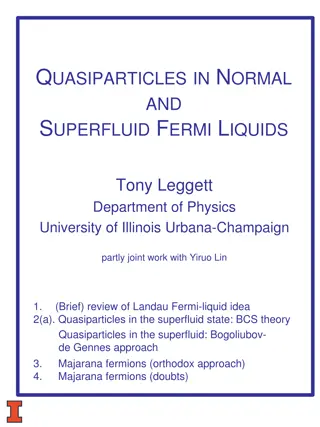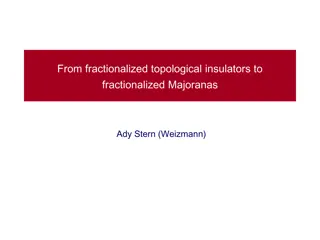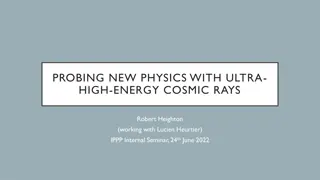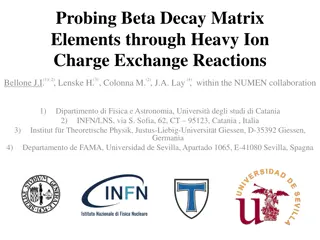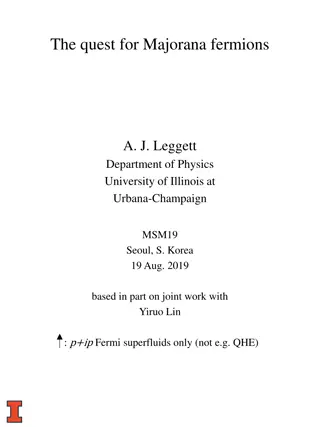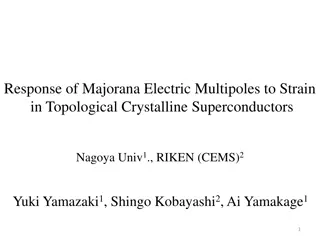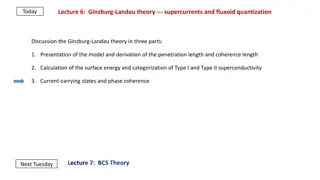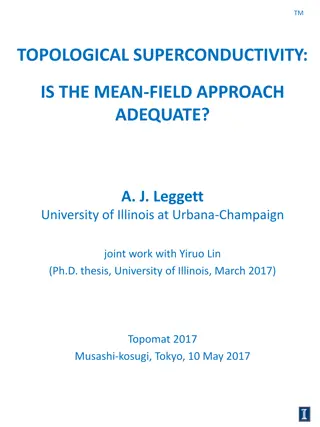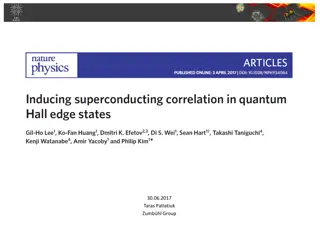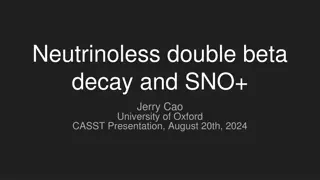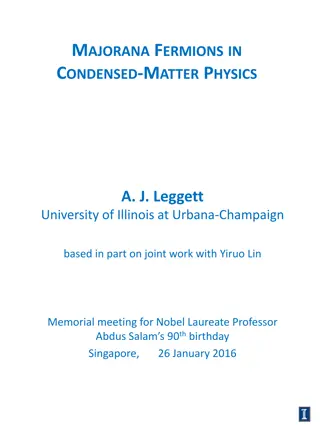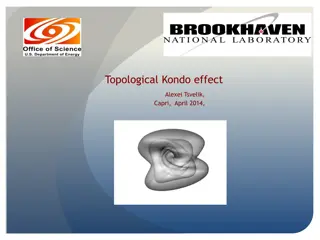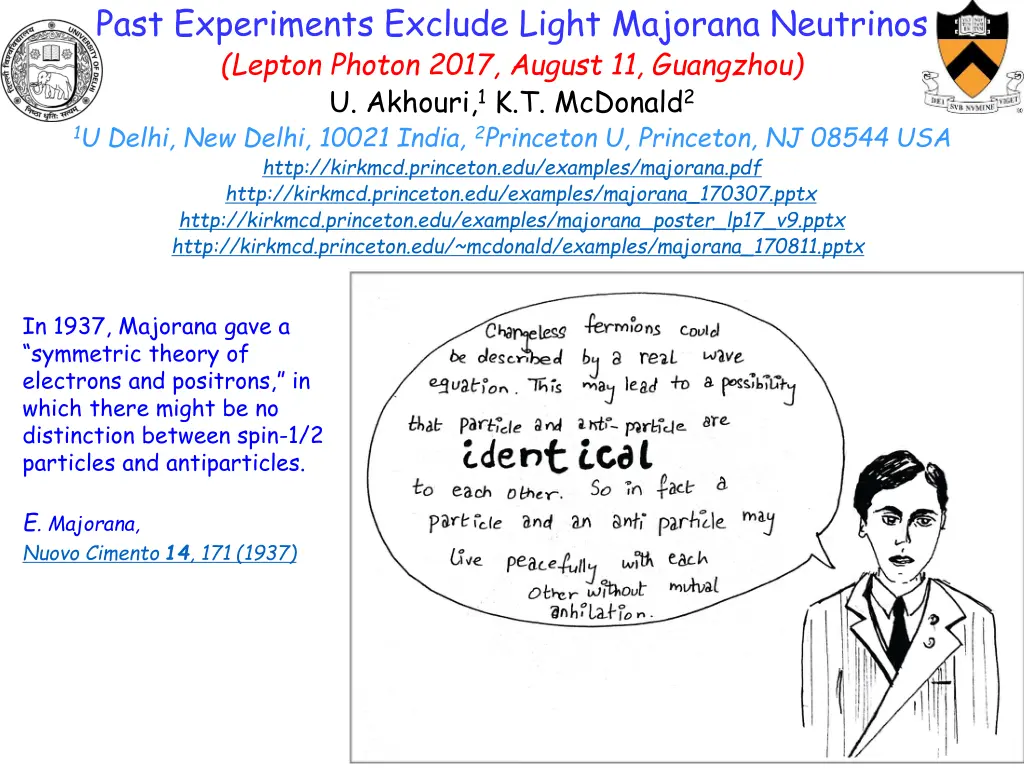
Majorana Neutrinos: Excluded Light Experiments
Explore the exclusion of light Majorana neutrinos in past experiments, the theoretical implications, and the challenges in confirming Majorana states. Learn about the complexities of neutrino physics and the significance of neutrinoless double-beta decay experiments.
Download Presentation

Please find below an Image/Link to download the presentation.
The content on the website is provided AS IS for your information and personal use only. It may not be sold, licensed, or shared on other websites without obtaining consent from the author. If you encounter any issues during the download, it is possible that the publisher has removed the file from their server.
You are allowed to download the files provided on this website for personal or commercial use, subject to the condition that they are used lawfully. All files are the property of their respective owners.
The content on the website is provided AS IS for your information and personal use only. It may not be sold, licensed, or shared on other websites without obtaining consent from the author.
E N D
Presentation Transcript
Past Experiments Exclude Light Majorana Neutrinos (Lepton Photon 2017, August 11, Guangzhou) U. Akhouri,1 K.T. McDonald2 1U Delhi, New Delhi, 10021 India, 2Princeton U, Princeton, NJ 08544 USA http://kirkmcd.princeton.edu/examples/majorana.pdf http://kirkmcd.princeton.edu/examples/majorana_170307.pptx http://kirkmcd.princeton.edu/examples/majorana_poster_lp17_v9.pptx http://kirkmcd.princeton.edu/~mcdonald/examples/majorana_170811.pptx In 1937, Majorana gave a symmetric theory of electrons and positrons, in which there might be no distinction between spin-1/2 particles and antiparticles. E. Majorana, Nuovo Cimento 14, 171 (1937)
Majorana noted that this theory doesn t apply to charged particles like electrons and positrons, but might apply to neutrinos. However, in a gauge theory, interacting fermions and antifermions have different quantum numbers, and cannot form Majorana states. Interacting neutrinos carry nonzero weak isospin and weak hypercharge in the Glashow-Weinberg-Salam model, and antineutrinos carry the opposite charges . Hence, these neutrinos cannot form Majorana states (unless one only considers electric-charge conjugation as defining particles and antiparticles).
The literature appears to consider two different possible forms for the hypothetical Majorana neutrino states (in terms of 4-spinors), . ??+ ?? ??+ ?? ??= ??= 2 2 + + + + , , The first form would imply, for example, that the decays could occur with roughly equal rates, and hence conventional neutrino beams would be 50:50 neutrino and antineutrino, contrary to experiment R L R R The second form would imply that the electroweak coupling constant g would have to be 42 larger to keep the observed rates of single-neutrino interactions with an internal W the same. But the, to keep the Weinberg angle the same, the coupling constant g would also have to be multiplied by 42 , in disagreement with the observed width of the Z0 by 200 . Conventional wisdom is that the only experiment which could determine whether of not neutrinos are Majorana states is neutrinoless double-beta decay. However, this view was developed before the W and Z gauge bosons were discovered, and it has been overlooked that experiments on the decay of the W and Z strongly exclude that the known light neutrinos are Majorana states (while permitting Majorana mass terms, neutrinoless double beta decay, and the see-saw mechanism).

